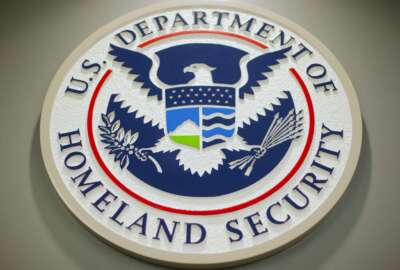Senate committee wants to know more about the ‘future of work’ at DHS
Most DHS employees can't telework, but Senate appropriators are evaluating the "impact" of alternative work arrangements across homeland security components.
The majority of Department of Homeland Security employees can’t telework due to their frontline jobs, but appropriators in Congress still want a better understanding of how “alternative work arrangements” are functioning at the federal government’s third largest department.
The issue is highlighted in the report on the Senate Appropriations Committee’s fiscal 2024 homeland security spending bill. “The committee is evaluating the impact of alternative work arrangements, including telework, on productivity and office space and other resource needs,” members of the committee write in the report.
The spending bill passed out of the committee last week.
The Senate panel wants DHS to provide “data on the number and percentage of employees who are permitted to use alternative work arrangements; the average number of days per month employees used telework in [fiscal] 2023; and how alternative work arrangements have impacted productivity, including comparisons of productivity metrics for employees who telework versus report to a department facility.”
The report would be due within 120 days of the appropriations bill being signed into law.
Additionally, the committee wants DHS to provide a component-by-component report “detailing any policies, whether formal or informal, governing alternative work arrangements and safeguards designed to ensure that employees are fully productive while taking advantage of an alternative work arrangement.”
While many departments and agencies have been rolling out return-to-office plans this year, DHS largely leaves it up to its various components to determine telework policies.
“Like other agencies, DHS is currently assessing its workforce policies to increase in-person work in order to continually improve the department’s organizational health and performance,” a DHS spokesman told Federal News Network in a July 17 statement.
“In order to support its diverse missions performed by 22 different component agencies and offices, DHS policy provides broad guidance on remote work and telework that is consistent with applicable laws, regulations, and government-wide directives,” the statement continues. “This policy generally allows decision making on these matters to take place at the lowest local level possible by the management officials who best know the operational realities and work requirements.”
Chris Cummiskey, who previously served as undersecretary for management at DHS and now consults on homeland security issues, estimated out of the approximately 260,000 employees across DHS, about 215,000 are in positions “exempt” from any telework arrangements.
“Whether they’re standing a post at the White House, or they’re a Transportation Security Administration worker, or somebody at the border, they really don’t have a choice,” Cummiskey said. “Those folks have to show up.”
But many mission support functions at DHS — such as IT positions and management positions — have become more flexible in the wake of the pandemic. And some DHS components, like the Cybersecurity and Infrastructure Security Agency, have a lot of jobs that can be done remotely and have used telework and remote work arrangements to attract talent.
“You’re seeing much more of that becoming the new normal across the department. Leadership and managers struggle through, what does the other side of the pandemic look like in terms of the future of work?” Cummiskey said.
Senate appropriators also want more details on requirements for office space not just at DHS, but across the federal government. The committee’s fiscal 2024 financial services and general government funding bill includes a requirement for a report on the “future of federal office space” from the General Services Administration and the White House Office of Management and Budget.
“Increased use of telework and the demand for federal office space are interrelated,” the report states. “It is incumbent on GSA and OMB to develop a plan to address this issue and work with stakeholders, including employees, agencies, federal unions, and local communities to develop a comprehensive plan on the path forward.”
For more than a decade, DHS has been moving to consolidate its headquarters elements in the national capital region at the St. Elizabeths Campus in Washington DC. Meanwhile, DHS components also operate out of regional campuses and numerous other locations across the country.
But in the wake of the pandemic, Cummiskey said both GSA and Congress are taking a hard look at the future of federal real estate and potential cost savings, with DHS serving as the latest example of that focus in the Senate Appropriation Committee’s spending bill.
“It’s rekindled the debate about not only consolidating the footprint in the national capital region and across the country, but also what kind of efficiencies can be garnered as a result of advancing technology in terms of where people work, how often they go to a physical location, and those have real cost implications in the budgeting process,” Cummiskey said.
Copyright © 2024 Federal News Network. All rights reserved. This website is not intended for users located within the European Economic Area.
Follow @jdoubledayWFED






